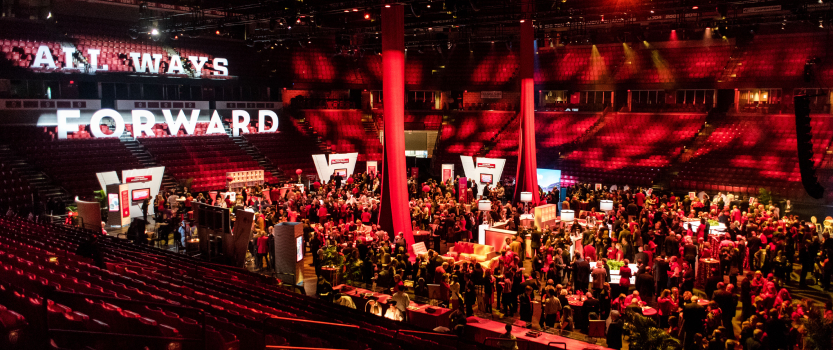All engagements should have a purpose—a central reason for being. When creating an event engagement strategy, it’s vital to start with why and build each component around that purpose to best reach your return on investment (ROI). So many events start with “let’s have an event” and the purpose is difficult to find.
How can you infuse purpose into every aspect of your event?
-
Setting Appropriate Event Goals
Setting meaningful goals isn’t always easy but important when determining purpose. Tying purpose to your event is crucial to invigorate (or reinvigorate) your audience’s connection with your purpose. With the right goals, your purpose will drive audience engagement and meet your company’s needs.
How can you pick an appropriate set of event goals to fuel the objective of the event? It helps to use a goal-setting framework such as the SMART framework to identify goals that are specific, measurable, achievable, relevant, and time-bound.
For example, a training event for employees in a company could have the following goal: “By the end of the event, 90% of the attendees should be able to identify four key benefits or features of our new product.” The goal is specific in that it identifies who is being targeted and their outcomes, measurable by percentile success rate, achievable in that it is a simple knowledge goal, relevant in that it relates to the company’s products, and time-bound because the deadline is the end of the event.
Narrowing Down Your Event Goals
When planning for an event, the hardest part of setting goals might not be finding a fitting goal to adhere to, but rather narrowing down the largest priority. It is common for an organization to have numerous initiatives that compete for your (and thus, your audience’s) attention.
Attempting to pursue too many goals at one time will be just that — an attempt. The end result will leave your audience wondering what they should do or turn them in a completely different direction than you intended. Consider the following organizational objectives when prioritizing your event goals.
- Level of impact on your organization’s overall strategy.
The availability of resources to address each organizational goal.
- How recently another event addressed each goal.
- Requests made by your leadership.
Evaluating Your Event Based on Its Purpose
After the event ends, be sure to evaluate how effectively you communicated the purpose of the event and drove your audience to the right outcomes to match your purpose. Did the event meet your goals driven by your purpose? Or, did it fail to do so because of common traps like:
- Delivering messages with a lack of clarity.
- Telling stories in a voice that feels inauthentic.
- Not understanding your audience’s pain points or points of pride.
- Losing sight of your purpose partway through the event.
This evaluation is vital for ensuring that future events remain focused on purpose by identifying what did or did not work.
-
Constructing Events Around Your Goals
If the first step in event management is choosing the right goals, the next step is constructing the event around those goals. To inspire movements that put your purpose into practice, it’s important to infuse that purpose into every aspect of your engagement.
Consider the nature of your event goals, your audience, and how to convey the message you want to send. For example, what are your audience’s top priorities and concerns? How do those priorities relate to your business’ goals? How can you craft a message that makes your event’s purpose relevant to your audience? What’s the best way to keep the audience engaged with your event’s main purpose throughout the entirety of the event?
These are just some of the critical questions that you’ll need answers to when crafting each piece of your event, such as:
- Announcement Emails and Social Media Posts: Prepare your audience to align their expectations with your event’s primary purpose.
- Event Ambiance: Non-presentation aspects of the event can help drive the event’s purpose home by creating an appropriate ambiance for the event’s purpose.
- Post Event Communications: Communications after the event help to reinforce its message and purpose.
- Technology: Custom apps and other resources can be effective for engaging audiences and making them feel connected to the event’s primary purpose.
For each and every component that you add to your event engagement strategy, consider how you can infuse it with your event’s primary purpose or incorporate other tools to help communicate your purpose to attendees.


